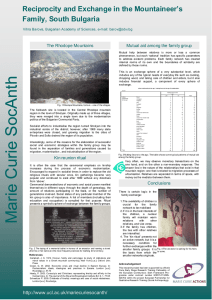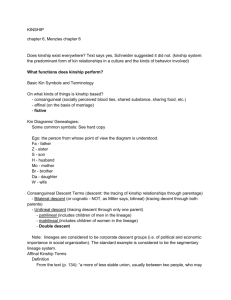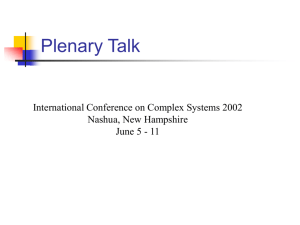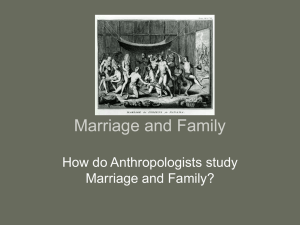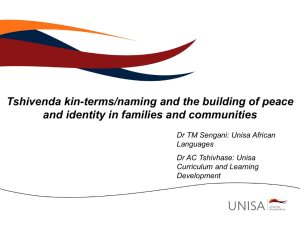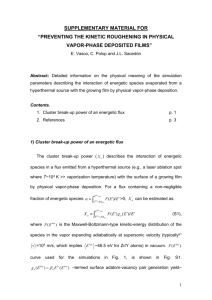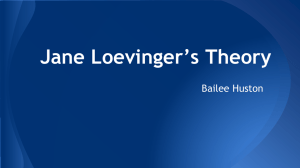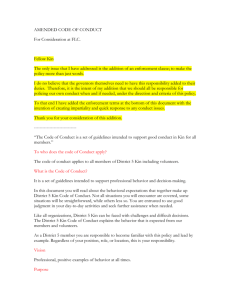Kinship
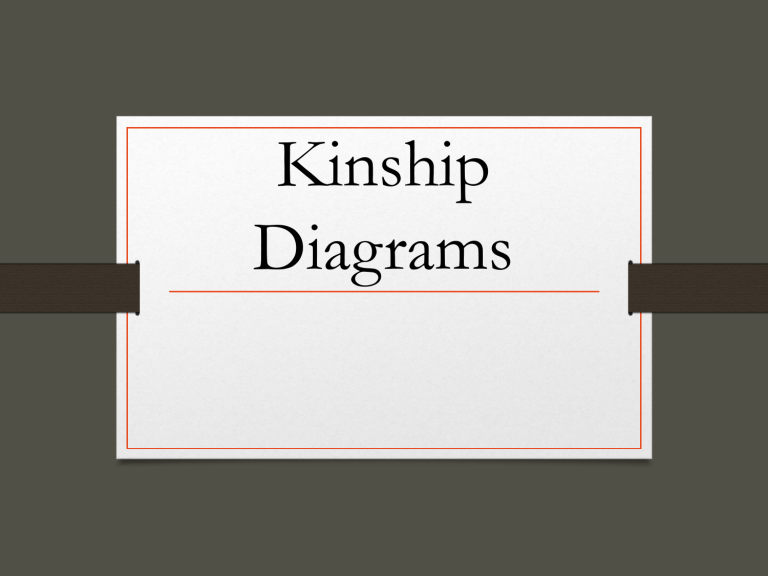
Kinship
Diagrams
Unit Learning Objectives
• Differentiate between nuclear & extended families.
• Distinguish between family orientation & family procreation.
• Define and differentiate between kinds of descent groups and postmartial residence rules.
• Differentiate between lineages an clans
• Differentiate between genealogical kin types and kin terms.
• Demonstrate your understanding of kinship diagrams through an activity.
Kinship (a.k.a)
‘Basic Building Block of Society’
• Basic principle of organizing individuals into social groups, roles, and categories
• Considerable diversity observed across cultures
Kinship Calculation
• How people in a particular society reckon kin relations
• Ego: position from which one views an egocentric genealogy
• Kinship is culturally variable
• Terms will differ from culture to culture
• BUT there are a limited # of patterns in which people classify their kin
Genealogical Kin Types
& Kin Terms
• Genealogical Kin Types vs. Kin Terms
• Genealogical Kin (e.g. father’s brother)
• Kin Terms (e.g. uncle)
• See p244, Figure 10.6 (and the following slide)
Kinship Diagram Symbols
Disregard colors!
World Distribution of Kinship Systems
Eskimo System
• 1/10th of the world’s societies
• Associated with bilateral descent
• Emphasizes the nuclear family by using separate terms (mother, father, sister, brother) that are not used outside the nuclear family.
Eskimo Kinship System
Hawaiian System
• Found in 1/3 of the societies in the world.
• Uses a classification system based on sex & gender:
• A person’s father, father’s brother, and mother’s brother are all referred to as father.
• In EGO’s generation, the only distinction is based on sex
• Nuclear family members are roughly equivalent to more distant kin.
Hawaiian System
Iroquois System
• EGO’s father and father’s brother are called by the same term, mother’s brother is called by a different term.
• EGO’s mother and mother’s sister are called by one term, a different term is used for
EGO’s father’s sister.
• EGO’s siblings are given the same term as parallel cousins.
Iroquois System
Omaha System
• Emphasizes patrilineal relationships
• EGO’s father and father’s brother are called by the same term, and EGO’s mother and mother’s sister are called by the same term.
• On the mother’s side of the family, is ‘lumped’ across generations
• That merging of generations does not occur on the father’s side
Omaha System
Crow System
• Concentrates on matrilineal kin
• Mirror image of the Omaha system.
• The father’s side of the family are ‘lumped’ across generations
• On EGO’s mother’s side of the family, which is the important descent group, generational distinctions are recognized.
Crow System
Sudanese
• The most complex naming system.
• Each category of relative is given a specific term.
• Therefore there can be as many as 8 different terms for cousins.
• This naming system is found in Sudan and Turkey
• It mirrors the society in how naming can reflect class, occupation and political power.
